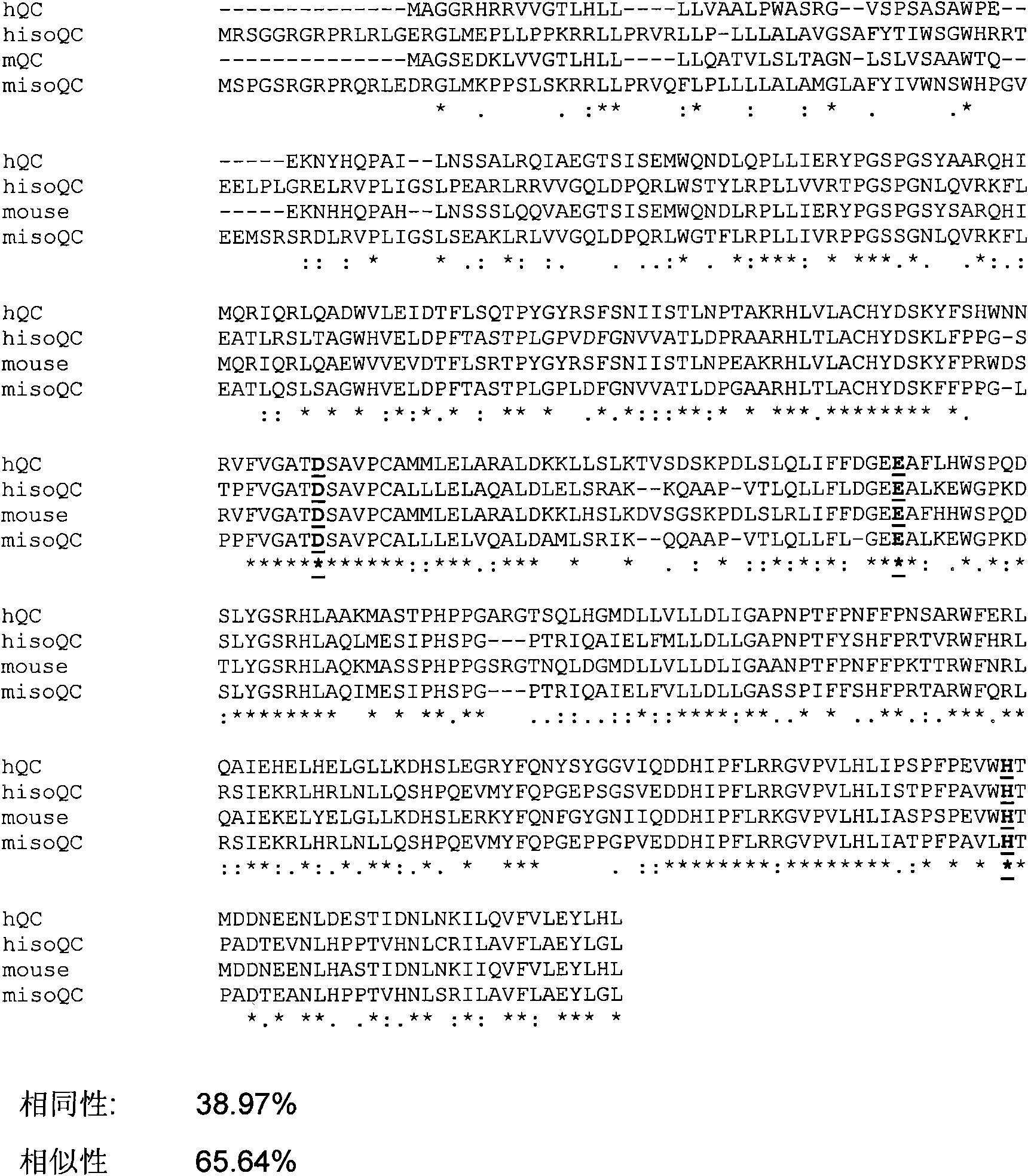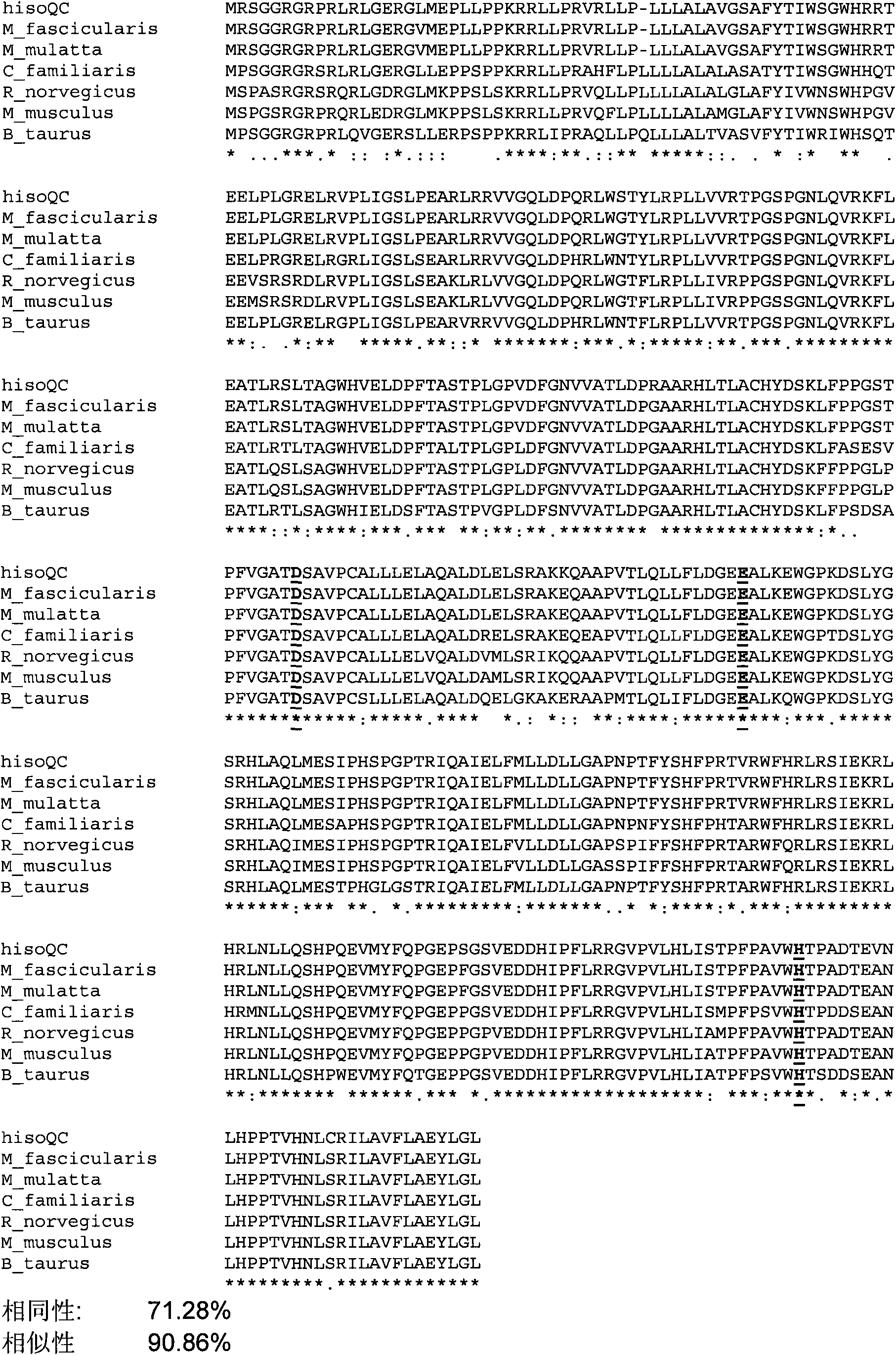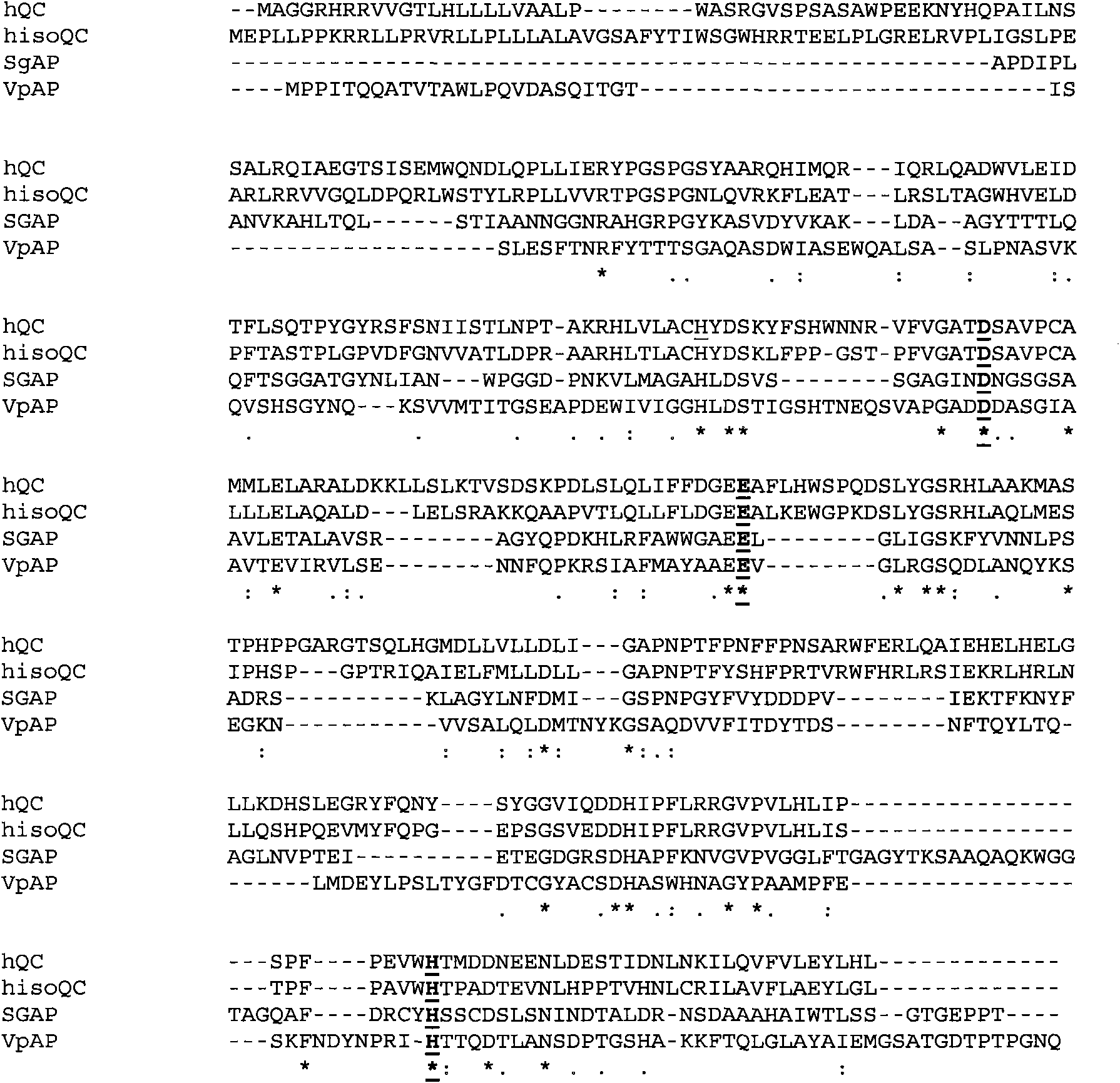Novel genes related to glutaminyl cyclase
An amino acid, similarity technology, applied in genetic engineering, plant genetic improvement, transferase, etc., can solve problems such as incurable multiple sclerosis
- Summary
- Abstract
- Description
- Claims
- Application Information
AI Technical Summary
Problems solved by technology
Method used
Image
Examples
Embodiment 1
[0333] Embodiment 1: the preparation of people's isoQC
[0334] Cell Lines and Media
[0335] African green monkey kidney cell line COS-7, human neuroblastoma cell line SH-SY5Y, human astrocytoma cell line LN405, human keratinoma cell line HaCaT, and human hepatocellular carcinoma cell line Hep-G2 in suitable Cell culture medium (DMEM, 10% FBS for COS-7, SH-SY5Y, LN405, HaCaT), (RPMI1640, 10% FBS for Hep-G2), in 5% CO 2 (HaCaT, Hep-G2, COS-7) or 10% CO 2 (SH-SY5Y, LN405) were cultured at 37°C in a humidified atmosphere.
[0336] Analysis of human isoQC expression using RT-PCR
[0337] Total RNA was isolated from SH-SY5Y, LN405, HaCaT and Hep-G2 cells using RNeasy mini kit (Qiagen) and reverse transcribed by SuperScript II (Invitrogen). Subsequently, the resulting cDNA was reacted in a 25 μl reaction with Herculase Enhanced DNA-polymerase (Stratagene) using primers isoQCh-1 (sense, SEQ ID NO: 53) and isoQCh-2 (antisense, SEQ ID NO: 54) A 1:12.5 dilution of the product ...
Embodiment 2
[0343] Example 2: Preparation and expression of isoQC in mammalian cell culture
[0344] Molecular Cloning of Plasmid Vector Encoding Human isoQC-EGFP Fusion Protein
[0345] All cloning methods were performed using standard molecular biology techniques. For expression of human isoQC-EGFP fusion protein in human cells, the vector pEGFP-N3 (Invitrogen) was used. The cDNA of native human isoQC starting at methionine I or at methionine II was fused amino-terminally in-frame to a plasmid encoding enhanced green fluorescent protein (EGFP). Primers isoQC EGFP-1 Met I (SEQ ID NO: 57) and isoQC EGFP-3 (SEQ ID NO: 59) were used to amplify human isoQC starting from methionine I and primers isoQC EGFP-2 Met II (SEQ ID NO :58) and isoQC EGFP-3 (SEQ ID NO:59) were used to amplify human isoQC starting at methionine II. Using the restriction sites EcoRI and SalI, the fragment was inserted into vector pEGFP-N3 (Invitrogen) and correct insertion was confirmed by sequencing. Subsequently,...
Embodiment 3
[0352] Example 3: Immunohistochemical staining of human isoQC in mammalian cells
[0353] Transfection and histochemical staining of COS-7 and LN405
[0354] To express the human isoQC-EGFP fusion protein starting with methionine I or methionine II, COS-7 and LN405 were cultured in 6-well dishes containing coverslips. Cells were grown to 80% confluency, transfected using Lipofectamin2000 (Invitrogen) according to manufacturer's manual and incubated in transfection solution for 5 hours. Thereafter, the solution was replaced with the appropriate growth medium and the cells were incubated overnight.
[0355] The next day, cells were washed twice with D-PBS (Invitrogen) and fixed with ice-cold methanol at -20°C for 10 minutes, followed by 3 washing steps with D-PBS for 10 minutes at room temperature. For Golgi band staining, COS-7 and LN405 were incubated with rabbit anti-mannosidase II polyclonal antibody (Chemicon) at a 1 :50 antibody dilution in D-PBS for 3 hours. To stain...
PUM
 Login to View More
Login to View More Abstract
Description
Claims
Application Information
 Login to View More
Login to View More - R&D
- Intellectual Property
- Life Sciences
- Materials
- Tech Scout
- Unparalleled Data Quality
- Higher Quality Content
- 60% Fewer Hallucinations
Browse by: Latest US Patents, China's latest patents, Technical Efficacy Thesaurus, Application Domain, Technology Topic, Popular Technical Reports.
© 2025 PatSnap. All rights reserved.Legal|Privacy policy|Modern Slavery Act Transparency Statement|Sitemap|About US| Contact US: help@patsnap.com



